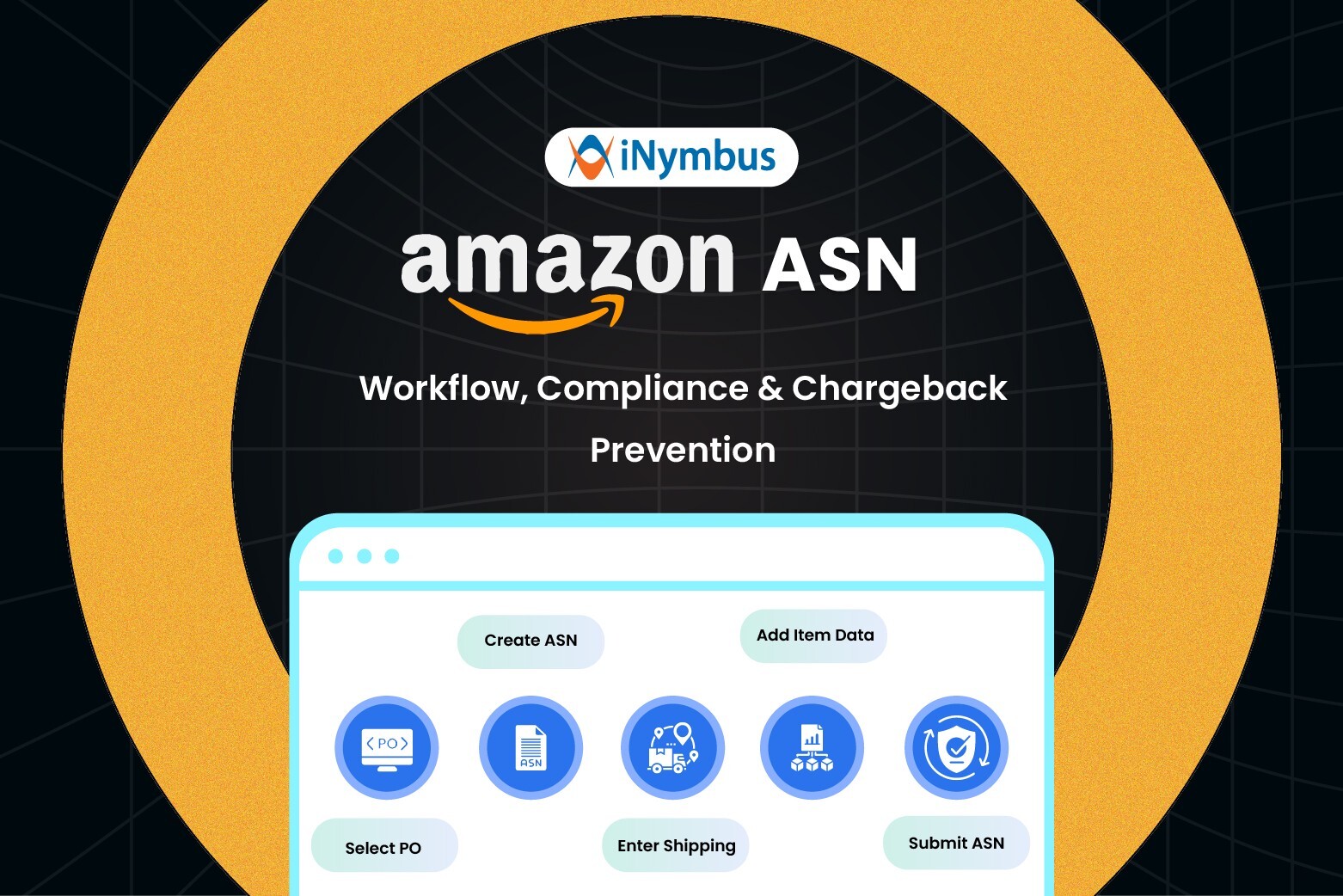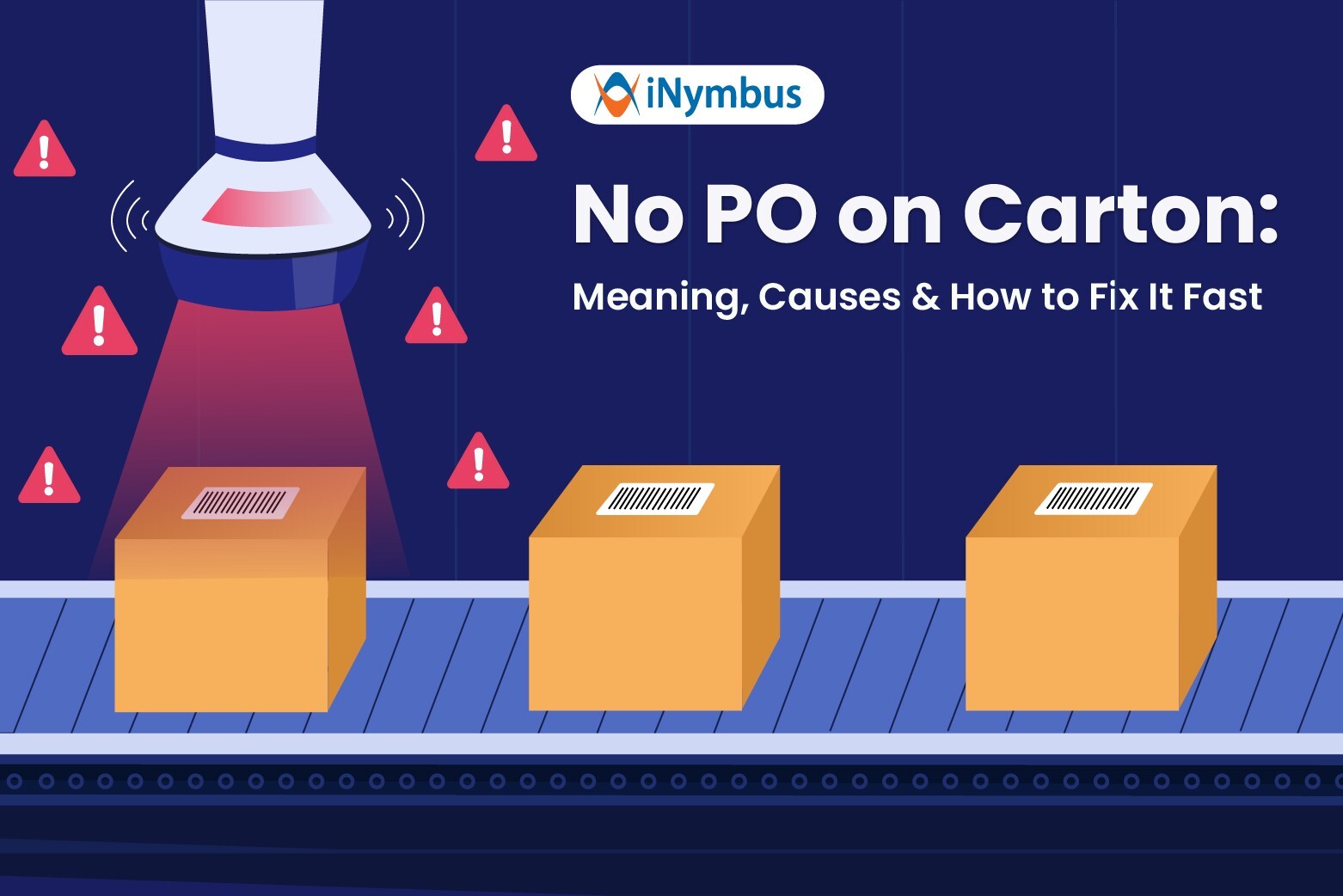Top 6 Benefits of Robotics in Deductions and Chargebacks

Disputing and resolving chargebacks and deductions is a constant battle. It's Optimus Prime versus Megatron, on the regular. Large retailers like Amazon, Walmart, and Costco, use technology to spit out deductions at a furious rate, and you're attempting to fight back with manpower or other "solutions."
Editor's Note: This blog post was originally posted in 2018 and the frustration with chargebacks and deductions is more relevant as ever. Click here to learn more.
But what options do you really have?
We recently participated in a webinar hosted by the Retail Value Chain Federation (RVCF), where we laid out the top 6 benefits of using cloud robotic automation in the processing of deductions and chargebacks. Watch the recording or read the transcript below to learn how you can start fighting back, and win!
Kate Zablocky: Today's program description, “Top 6 Benefits of Robotics in Deductions” is as follows: Robotics process automation is now widely used across various industries to solve many problems timely and effectively. In this session, you will learn about the top six benefits of using robotics in the area of customer deductions and chargebacks, which is a complicated problem since it requires interaction between two or three business partners and three or more departments. Presenting today's program is Rohit Patel, Credit and Collections Consultant at iNymbus.
Rohit Patel has extensive experience in the credit and collections arena with long tenures leading the credit and collection teams at Sony Computer Entertainment America, Warner Bros. Home Entertainment, and ResMed. At these companies, Rohit's expertise includes the development of strategic plans that led to improved financial operating results and successful global ERP implementation, as well as other process and system enhancements that led to increased efficiencies.
Rohit believes that technology will play a critical role in the future of credit and collections and is always looking for cutting edge technology that disturbs the norm. I am pleased to turn the program over to Rohit.
Rohit Patel: I appreciate it. Today, we’ll talk about the problem itself with deductions and chargebacks. What are robots? We'll go into the six benefits of robots in deductions and chargebacks. I'm sure a lot of you have heard about robots before, but we're going to specifically talk to the benefits for chargebacks.
The problem: Your teams are stuck under huge, never-ending piles of chargebacks and deductions. I've seen this in several companies that I've worked at. Chargebacks and deductions can get simply out of control. Often teams and companies are behind months, if not several quarters. And sometimes it’s difficult to look at that problem. It's not the best job that everyone wants to do. People don't go to school for doing this, and some of them really hate the volume of chargebacks that come through.
Often, you'll see some of the same data that is pulled out of ERP systems that need to get populated into, for example, Excel spreadsheets and then back into vendor retailers. A lot of typing and errors can occur along that process. There’s also the problem of keeping up with ever-changing retail portals. I'm sure you’ve seen more and more retailers requesting that you use their portals, hence doing the work of their payroll department has been pushed to their suppliers. Last but not least, hiring of seasonal temps takes away from actually focusing on the issues at hand.
Sound familiar? I'm sure it does. Can you beat them at their own game? The likes of Amazon and Costco? Even FedEx or UPS, they have chargebacks for missed shipments, lost shipments, etc. The simple truth is, you can't beat them without robots. In the world of chargebacks, companies like Amazon have more tech strategy, time, and money than you will ever be budgeted or even desire to have. Keeping to note, most companies on this call are in the business of making product, selling it to the distribution channels, and not necessarily spending time and money on tech strategies.
Does throwing manpower at the problem work? In my experience, I did try this before technology was out there, when I inherited this problem at Warner Bros. We had probably 100 staff and about 20 or 30 temps. We could never keep up with the volume. The chargebacks and deductions were unbeatable with existing solutions at the time. Due to their size and technology, the Amazon’s and Walmart’s of the world have gotten into that tech space. The money they've spent definitely outweighs what any supply company could do to keep up with the deductions. They use automation and a ruthless ability to take every single chargeback. The make you sign these detailed vendor manuals from them. There's a lot of fine print and they will take every single penny that they can.
What are robots? Many years ago robots were introduced into society, but more recently, you have this new process, Robotic Process Automation, RPA. Robots basically automate business processes and they replicate the human actions performed. It's basically a software robots are combined with Artificial Intelligence behind the scenes, that do the work of your teams. The result is business process automation technology done more accurately, more basic, and more timely.
You're probably wondering about IT, CEOs, and what is their take on this? I'm going to read this quote from May 18th. "Software that automates basic tasks is catching hold in large enterprises, where CIOs are seeking to inject greater efficiency into business processes, called RPA, robotic process automation. The technology enables IT departments to use a piece of software, called a robot, to perform routine tasks." This was introduced initially in the accounting space and the Account Payables area. Those processes are repeatable and often don't change. Now we're seeing companies like iNymbus moving into the chargeback and deduction space. But it did start off in the payroll department. A lot of outsourcing companies are actually moving towards RPA to help with their ROI.
Robots level the playing field. They exist to solve one problem, to resolve chargebacks and disputes at lightning speed and in a much timely manner to keep your chargebacks as current as possible.
Technology is not just bigger stick, right? It's a totally different way of dealing with deductions and chargebacks. Robots will allow you to fight fire with fire, and bring your chargeback and deduction backlog down to zero, and keep them consistent as possible. The point here is fighting technology with technology. If you try to fight technology with resources and additional software, you're not going to be able to keep up with the investments that the Amazon’s and the Walmart’s of the world do.Moving on to the six benefits of using robots in deductions and chargebacks.
1. SCALABILITY. The enemy is the volume of transactions. They increase, and that may cause you to have to hire resources, increasing costs. Most CEOs and CFOs realize that extra money spent on temp resources is important to get their ROI on every penny that's collected back on outstanding chargebacks.
The enemy of scaling is new software solutions out there. Often you will need to put in a big capital budget. It'll takes months or years to implement. By the time you're comfortable with that software, there's a new version. Companies often use thresholds to compete with the volume of deductions. Maybe you are surprised or not surprised to realize that retailers are out there constantly pinging or challenging your system to see what that threshold is, and often they will go ahead and continue to take chargebacks. I've seen companies that are dealing with penny chargebacks. It's not worth the resource or the time and effort to do that. However, with robots it’s a different story.
Robots scale easily, for free. To truly solve a problem, processes must be simplified to a level where it can go from zero to a million, and then from a million to zero without any effort. Very difficult to do with other resources and you don't have to worry about threshold limits or auto write-offs. With robots, once that process is identified and the robots are able to transact back-and-forth and pull the information, you can scale seasonally up and down quite efficiently.
Robots are easy to implement and are easily taught and trained on your processes. It doesn't have to be the same standard process. They can figure out a return shortage from a regular shortage and go through that process. They're scalable to volume up and down just at the push of a button, to keep up with the transactions. They're constantly out there. They don't sleep. They don't take lunch breaks, so they're constantly working for you. A month or two to implement, not nine months to a year, and you have your own little robot army at your fingertips. I'll share some data with you as it relates to the equivalent of a regular full time employee to the number of robots you can potentially have in that time.
2. FRAGMENTATION. When solving chargebacks and deductions, it feels like it takes a village to take care of them. Who is involved? Accounting is involved, logistics, sales, the shippers, retailers, IT, everyone needs to get involved with chargebacks to really, truly solve the problem. Depending upon your organization, the silos can nearly be insurmountable. Each one I just mentioned could probably have their own silo. Meanwhile they're also busy solving their problems and trying to resolve their own issues at hand, and often won't make time for you to help you with your chargeback and deduction issues.
How much time does it take? If you run into a problem or a complication, communicating up and down the organizational company ladder may take weeks. I remember dealing with the co-op and advertising teams and the return warehouses. It would take weeks, if not sometimes months to get that information to help resolve the issue. Every day that it's outstanding, the longer your money is outstanding. It can go back and forth with multiple follow-ups. Did they provide you with the full information? Did they not? Whereas with robots, they go ahead and get all of the information right at the inception instead of you having to wait. Many times the organizations have someone who specializes around the channels. You may have one person for Walmart, one for Amazon and one who does FedEx, and and so forth. It takes time to get all the information just to dispute a chargeback, let alone collect on it.
Robots smash fragmentation. A single robot can go out to a retailer tonight, pull information, and send that information back to your accounting system. It can pull information from your ERP system and it can match up the shipper information. If it needs to go to FedEx or UPS, it can do that, and file the paperwork at lightning speed. It can also interact with other departments and companies at the same time. If you need a return or a department needs to be CC'd on it, it can do that also. Robots really clearly smash the fragmentation. They initiate their plan, do, check, act, and move on. It's a really quick process in the background
3. SEASONALITY. Whether it's the holiday season or a new product launch that you may have, seasonality definitely comes into play.
The question is, what percentage of people in the Manufacturing A/R groups, quietly sob the months leading up to a holiday? Well, 200%. All joking aside, I know I've worked in departments where we've had to make sure we have incentives for people to continue, especially after the busy new product launch or heavy holiday seasons, to continue to motivate them. It can be daunting.
Robots don't care about December, or January, or any month. They don't take breaks, they don't take vacations. They're constantly working for you. The benefits of hiring robots, is hiring costs are minimal and it's one time. You got the robot, it's in there, it's working for you consistently. They can replicate easy to deal with volumes. When it's a busy time of year or it's a quiet time of year, they're constantly in the background doing the work. You don't have to beg them to do work. Also fortunately, robots don't talk back like C3PO, they just do the work for you.
4. TIME. Robots are 60x as efficient as a human. How did we calculate this? By watching people perform tasks multiple times and then by automating with robots. If one of your highest performers can process approximately 6,000 chargeback deductions a month, a robot can do that in 2.6 hours. The process power of this technology is quite amazing. Robots rarely get tired, bored, resentful, bitter, angry, or sad. They're constantly working in the background.
5. COST. That’s very important to the CFOs, as well as your department budgets. Robots are 1/6th the cost of people. After you consider implementation costs and ongoing robot maintenance, the costs can be calculated at about 1/6th of a person doing the job. They work 60 times faster. This is simply a raw robot versus full time employee. Other benefits exist as well. No HR issues, no breaks, etc.
In addition you can keep your expenses flat. This is a quote from a Senior Director at D&H Distributing. "We can reallocate headcount now, and use staff in another area that needs attention outside this world. And as we grow, we don't have to add bodies. We can make it work for us." They were able to reallocate staff and keep expenses flat. Now they can work on other areas that will help the organization, and repurpose resources.
There was a case study done on D&H Distributing. One customer said that they had up to three people who are now adding value. They're a cost center dealing with deductions, they are actually adding value to the organization in other areas. That's roughly 6,000 manpower hours doing something else besides pushing paper, filing claims, etc. And they're far from done using robots and technology.
By the numbers, just at a high level, the time to organization and file a claim is on average 24 hours by the robots. Manually can take three to six months. On the cash flow component of it, they get you current and they keep you current. We've seen companies that have been paid back, using robotics technology, within a week. They're filing claims and you may be surprised to hear, that Amazon is using robots to actually generate chargebacks and deductions because they're not going to have someone write up a one-cent chargeback, or any of these noncompliant chargebacks of 12 or 13 cents. They don't have someone entering that into the system; its robots doing that for them. Often with this one case, we helped them fight those chargeback compliances and they were getting paid back within weeks.
Not only do they have robots that are generating the chargebacks, they probably have robots that are reviewing anything you're disputing and denying and matching up side-by-side. If you have paperwork submitted, the robots are paying them back as well. So cash flow goes from three to six months, to zero to one month. To process a thousand claims, it'd take about 240 full-time employee hours, whereas the robots can do it in the background and we've seen claims get uploaded in seconds, literally. 10, 20 seconds, claims are getting uploaded daily and consistently.
Then there’s the training, and often when you have changes in your processes as a result of your retailers requesting changes on their website, it’s about 200 hours spent annually on that, whereas the robots will figure out if there's any changes on retailer portals and go ahead and make sure the correct cells are populated with the correct information. Another customer of iNymbus had roughly 80% savings when they were paying almost $5.25 per transaction, per claim.
6. STRATEGIC TEAM. This is really important. What will happen when robots take over the chargeback area and there aren't any chargebacks to process? What is your team going do? A quote from a VP of Credit Services at D&H Distributing, "You add value immediately. It's actually the ability that we haven't had to add staff, we reallocated capable folks into more valuable, more enduring paths, like the root-cause analysis to help reduce the deductions." I've seen this. Not only will you be able to repurpose your resources, but now you can focus in on what I call “stopping the bleeding.” It's great to have the robots working for you in the background cleaning up the deductions, and your team actually spending time and adding value elsewhere.
Not only that, you and your team can grow. Another quote from D&H Distributing, "All we were doing was plugging holes, now robots plug them automatically. It gives our staff the ability to figure out where those holes are coming from in the first place." It enhances their job at the company and brings more value to them personally. You'll see the teams more cheerful and more engaged about problem-solving, so it's adding more feathers in their cap instead of just pushing paper and disputing chargeback problems.
You can also go into new markets. Another quote from D&H Distributing "It allows us to engage in customer distribution that we generally try to shy away from because they are known for being troublesome. Particularly in the segment of grocery and drugstores that are incredibly difficult to deal with. When we have this kind of tool in our arsenal, that allows us to engage with different customers." In a nutshell what he’s saying is they were resistant to go into new markets because as a distributor they were scared of the volumes of deductions that would create. They're the middle man so they were saying, "Well, it just doesn't make sense for us to move into new markets." Now with robot technology, they're open to this idea of different markets that they were scared of going into previously.
So you can transform your team to a strategic team. Your department can be empowered and then going forward, they're just not an expense or perceived as an expense drain. As accounts receivable, you’re doing a great job collecting money. Every penny from chargebacks that is collected back, goes to the company's bottom line. You can actually transform your department as well as yourself into being a strategic team for the organization, not just a cost center.
So how do you start? It’s a three-step process. You're constantly putting out fires, but you don't have to let issues and fragmentation dominate your strategic vision. If you have a vision, reach out for a demo. See what robotics are all about. Then assess the vendor or vendors that you may have to say, "Does robot integration make more sense and is it part of the roadmap that we have?" Lastly, you’ll have to onboard and train. Implementation is weeks and often the better companies that do robotic automation assess base companies because they're using the latest technology. Not only that, they can add the next wave of technology in the chargeback industry.
There are many distractions and you're often going around in circles, but focus on your goal. Focus on your department and your issues. Implement robotics to solve the specific chargeback and deduction problem. Don't try to solve your problem with a larger outsourced robotic process automation effort driven by a technology team. That will take years to see results. CIOs are excited about this, but often their teams are worried about new technology coming in. What's that going do to their IT footprint?
Don't be fooled by all-in-one accounts receivable packages that do everything, because they don't. They specialize in making sure that all of the information is in one place for your teams to do the work, whereas the robots actually do the work for you. In chargebacks and deductions processing, industry knowledge is key. You have that knowledge of what needs to be done, which is to put into nice processes where robots take over and do the work for you.
Last but not least, the iNymbus difference. I've seen them implement this technology through numerous companies, and it is mind-boggling. First, they have personal knowledge of the credit and collections space, and their cloud-based solution scales with you, so no growing challenges. They already have the robot capabilities to process chargebacks and deductions. There are other companies that do the accounts payable space, but iNymbus specializes in this area and they have artificial capability, or AI, in-house. Their systems are continually learning from other companies, other distributors, other suppliers and retailers. They have processes which keep up with supplier and retailer portals, and can pivot quickly, so they can scale up and down pretty quickly.
iNymbus also has a system architect which is best in class. My understanding is that they spent their first two years building the system architecture to make this process as easy as possible and geared and designed towards chargebacks and deductions. The implementation speed is weeks and not months, and they've done this. They come up with a plan that's easier to put together. The quickest one I saw was put into place in four weeks, and the supplier customer was up and running and getting money back in week five or six. The pricing is also a SaaS model, and the customer has a direct line into iNymbus for issues. Last but not least, a no-cost trial. Use the service for 30 days prior to making a payment. If you like it, move forward. If not, no harm, no foul. Thank you for your time and I'll turn it over to Kate for any questions.
Zablocky: Wonderful. Thank you Rohit for all of your insights and techniques. I'd like for us to address some of the questions that we have. What are the quantity of chargebacks that make robot implementation pay off?
Patel: It varies from company to company, the number of chargebacks. The quickest ones that we've seen are definitely shortages and noncompliance issues that would pay off immediately. Returns, variances, and MDF co-ops take a little bit longer. But, it really doesn't have to be a high volume, so long as there is volume there.
Zablocky: How long does it take to switch to robots?
Patel: It depends on the appetite of the company looking at this technology. If there's a good appetite, it can be done within weeks. What I've seen is you want to try one reason code for one retailer to start with, because your process for that specific reason code is going to be saved for all other retailers. Try it just for one, and that takes a week or less. You get it set up, see how it works for that specific retailer, and then you can add on as many as needed. You can do different reason codes later, and you'd be amazed at how quickly that can be done.
Zablocky: Do the robots replace my whole processing team?
Patel: No, they do not replace your whole processing team. What I've seen is that the robots handle north of 80% of your chargebacks and deductions. For example, MDF is often some gray area, so the robots surely will be able to do that in time, but it’s not going to replace your whole team. It’s just augmenting your team and then they're doing the work for you. You're just adding the robots to your team because they’re more efficient and faster. However to cover 100%, the technology is not there yet. It does cover greater than 80% of the chargebacks that are typical.
Zablocky: What examples of manual activities in a deduction process is a robot able to do, all portal communications, internal communications?
Patel: The robots can have the ability to go into external portals of the Amazon’s and Walmart’s of the world, and your FedEx, UPS, etc.. They can pull information and house it, and then they will go ahead and work on that deduction. They'll also pull the information from most company's ERP systems. Robots are agnostic to what shipment it's going to come in from. They'll call the invoices, the billing shipments, the purchase order, whatever you allow them to pull in. They'll get that information and work that claim and do the analytics for you. Then they can email whomever you want, so you may have a list of two people or a list of ten people that you want CC'd. Not only can they send emails, they also have the ability to go ahead and upload to vendor portals as well.
It doesn't take a lot of time for them to pull this information, digest, and if it’s a true denial, go ahead and upload it. There are cases where you can have the robot push information into your ERP system, to say "now we're going to issue a credit because I've done the analysis and we don't need to do that." It will help, or eliminate the issue of people manually pulling out credit or debit memo requests as well.
Zablocky: Can robots handle all types of chargebacks?
Patel: As long as it's standardized and it's repeatable, it doesn't matter the complexity of it, robots can handle it. When there's human intervention needed to look at specific things, the technology is getting better there. I mentioned advertising and MDF a couple of times. In my experience, often it has to measure the width of the ad and what content is in the ad. The AI technology is getting much better in recognizing signatures and images to help solve that problem. So north of 80%, yes they will be able to handle. I think within a couple of years we’ll see that at 90% or higher.
Zablocky: Many times we only learn of a chargeback when they short pay on their remittance, not always right to zero. Can robots help with this?
Patel: Yes, they use AI technology, so once that chargeback is deducted on their remittance, they can figure out that's a chargeback off another chargeback and a reason code. You can have a cross-reference table from the retailer reason code to your reason code, and the robot can figure that out and say, "There's no chargeback for shortage. I have an invoice number. I'll go ahead and pull that." It can be done, but the better way is to proactively have the robot going in to a retailer portal or a retailer's system and pulling the chargeback before the deduction is taken. We've seen instances where for example, it’s a 45-day term and you've agreed that the retailer is not going to take that chargeback until 45 days, and deductions need to be resolved before they've been taken. The robotic technology can read remittances, identify what they are, and start the reconciliation and chargeback process immediately.
Zablocky: Great. Thank you for your questions and for attending today's seminar. For those of you who have further questions about the material covered in today's presentation, or questions that were not addressed in the Q&A, please feel free to contact Rohit Patel directly. Please also note that Rohit will be presenting at the RVCF Fall Conference in San Diego, CA October 14-17, 2018. Be sure to attend, introduce yourself, and ask questions. Thank you and have a great day.




